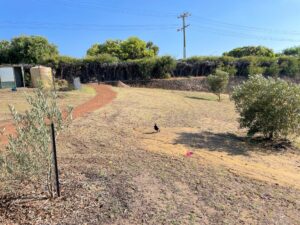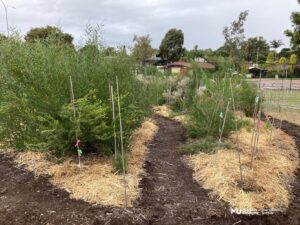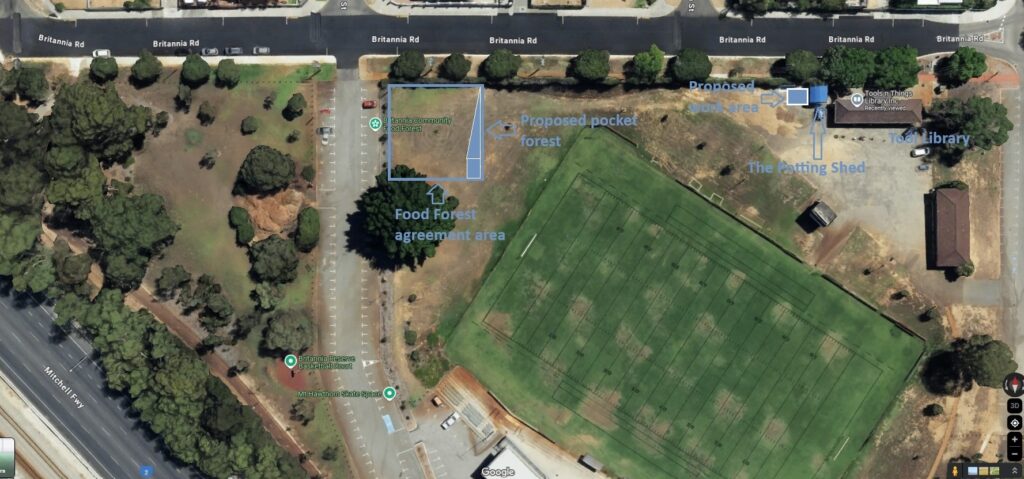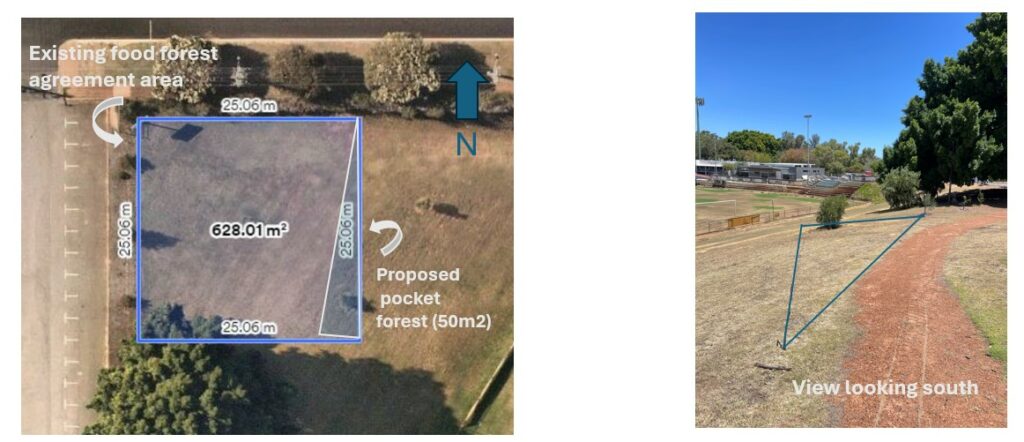Black Cockatoo Forest Restoration

Looking north to the site which is located to the right of the gravel path
Last year TTV and its members were both shocked and inspired by two presentations which have motivated us to act and establish a Black Cockatoo forest. The showing of the documentary Black Cockatoo Crisis highlighted the plight of Black Cockatoo’s across south western Australia and in particular the ongoing loss of habitat and associated tree canopy cover in urban Perth. Subsequently we were inspired by Dr Grey Coupland’s talk Pocket Forest’s for the Inner City which we hosted in September which provides a pathway for restoring habitat in the inner city, starting with the underlying soil. Consequently we have decided to develop a pocket forest using the Miyawaki principles championed by Dr Coupland along the eastern boundary of the existing food forest located at the north western corner of the Britannia Reserve.
Specific objectives of the project will be:
- To provide residents and others with a local demonstration of how to transform urban land and soil into a carbon sink focusing on providing native habitat for Black Cockatoo’s.
- To build the capacity for residents and others to restore soil carbon and biodiversity in inner city yards and courtyards.
The site will provide a local demonstration of how to restore habitat and soil carbon using the principles developed by Dr Akira Miyawaki while providing a training ground for those residents who want to establish a pocket forest in their yard or courtyard as part of their My Healthy Soils Project. Pocket forests:
- can be achieved with as little as 3 square metres of area
- contain 3 to 5 native plants per square metre
- reach maturity up to 10 times faster than traditional planting methods
A key part of the Miyawaki methodology is building up the soil organic matter and carbon before planting and colonising it with microbes from nearby bushland. A major point of difference to other pocket forests established in Perth will be the use of FOGO compost and biochar in the initial soil preparation which will provide the resistant carbon found in natural soils. The site will also be colonised with soil microbes (e.g. bacteria, fungi) from nearby bushland.
Volunteer
To volunteer with this project please email info@ttv.org.au
More information
For more information about pocket forests check out this website, video or listen to this podcast. This series of videos provides a very good overview of the process.

The Eddystone Primary School Pocket Forest site after 22 months
Key project activities which need to be undertaken include:
- Prepare project plan / communication plan
- Site planning
- Flora survey
- Soil analysis
- Order (or grow) plants
- Prepare compost and biochar
- Source soil microbes
- Site preparation
- Plant trees / shrubs (notionally on National Tree Day 27/7/2025)
For further information contact ian.kininmonth@ttv.org.au

Location of the proposed pocket forest

